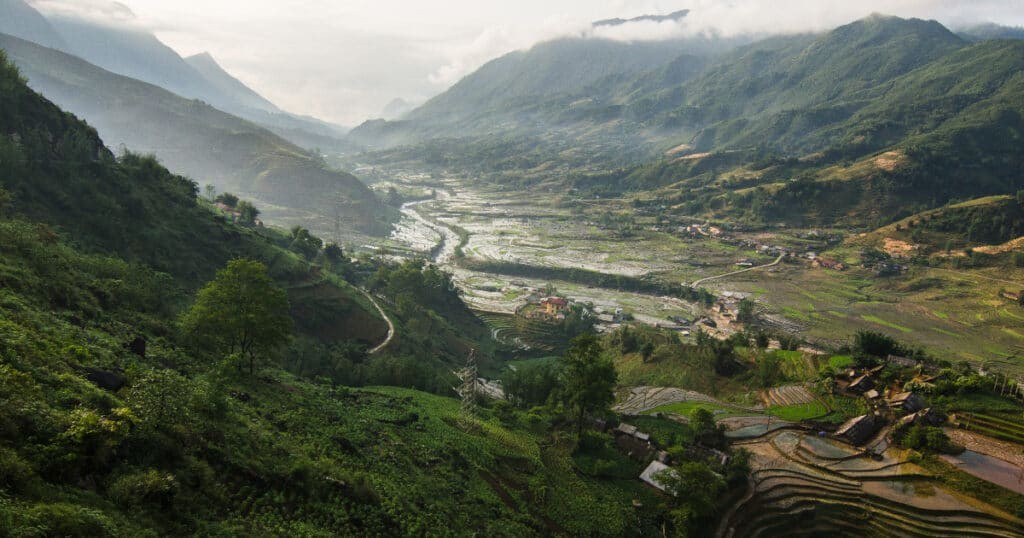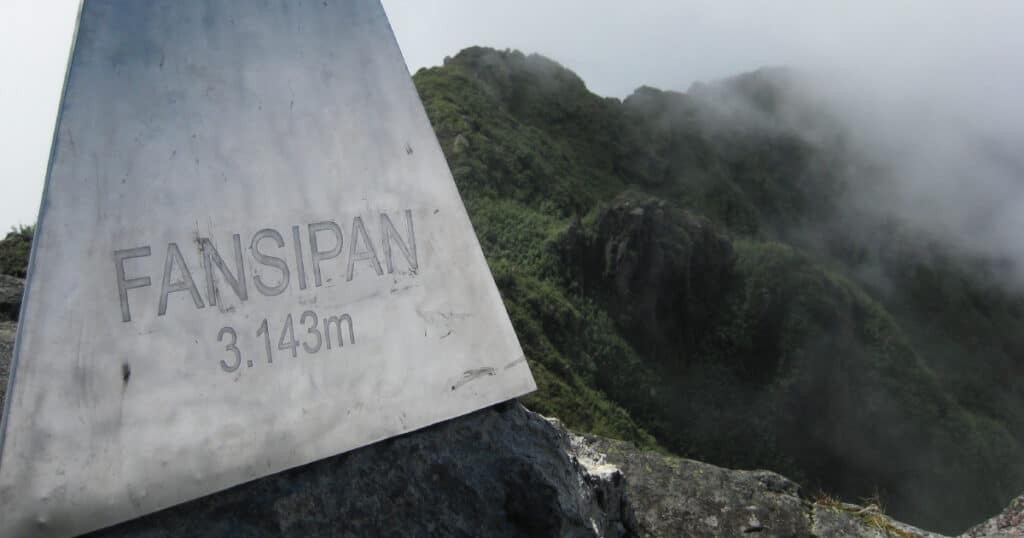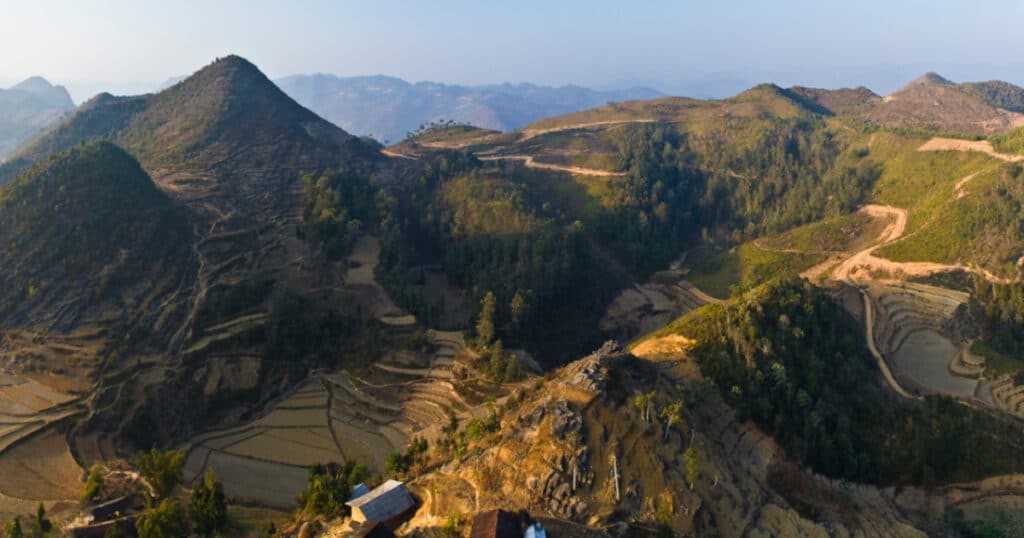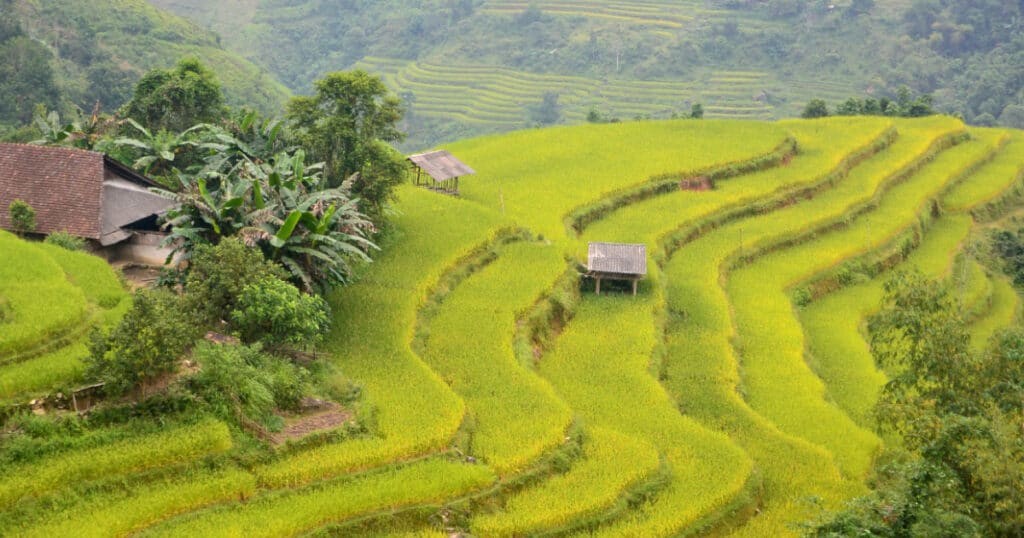Is it possible to do overnight treks staying in different ethnic villages in Vietnam? Absolutely, overnight treks in Northern Vietnam offer a deeply immersive experience, allowing you to stay in various ethnic villages and explore the rich cultural tapestry of the region. With SIXT.VN, you can conveniently arrange these unique cultural tours to discover authentic local life and breathtaking landscapes. This article guides you through the best treks, highlighting homestay experiences and cultural immersion.
1. What Makes Overnight Treks in Ethnic Villages Special?
Yes, overnight treks staying in different ethnic villages are a unique and enriching experience. These treks allow you to immerse yourself in the local culture, learn about traditional lifestyles, and enjoy the stunning natural beauty of Northern Vietnam. This unique travel experiences allow you to witness authentic cultural tourism and community-based tourism.
1.1 Cultural Immersion
Staying in ethnic villages provides a chance to live among the locals, learn about their traditions, and share meals with them. According to a 2019 report by the Vietnam National Administration of Tourism, cultural tourism is on the rise, with an increasing number of tourists seeking authentic experiences (https://tourism.gov.vn).
1.2 Scenic Beauty
The trekking routes pass through stunning landscapes, including rice terraces, mountains, and forests, offering breathtaking views. The terraced rice fields of Sapa and Hoang Su Phi are particularly renowned and recognized as national heritage sites.
1.3 Community Support
These treks support local economies by providing income to the villagers through homestays, meals, and guiding services. Community-based tourism models, like the one in Da Bac, ensure that tourism benefits the local population directly.
 Scenic rice terraces and mountains found when trekking in Northern Vietnam with Discova
Scenic rice terraces and mountains found when trekking in Northern Vietnam with Discova
2. Where Can You Experience Overnight Treks in Ethnic Villages?
Yes, there are several regions in Northern Vietnam known for offering fantastic overnight treks staying in different ethnic villages. Sapa, Ha Giang, and Mai Chau are among the most popular destinations.
2.1 Sapa
Sapa is famous for its stunning rice terraces and diverse ethnic communities, including the H’mong, Red Dao, Tay, Giay, and Phu La. Multi-day treks allow you to explore the valleys, mountains, and villages, staying overnight in local homestays. Sapa is known for its sustainable tourism and responsible travel.
2.1.1 Trekking Routes
Sapa offers numerous trekking routes suitable for different fitness levels. Some popular routes include:
- Cat Cat Village: A short trek from Sapa town, offering insights into the Black H’Mong culture.
- Lao Chai – Ta Van: A longer trek through the Muong Hoa Valley, showcasing the rice terraces and villages of the H’mong and Giay people.
- Fansipan Mountain: A challenging trek to the highest peak in Indochina, with overnight camping options.
2.2 Ha Giang
Ha Giang is renowned for its dramatic landscapes and remote ethnic villages. The region offers a more off-the-beaten-path experience compared to Sapa, with fewer tourists and more untouched natural beauty.
2.2.1 Trekking Routes
- Dong Van Karst Plateau Geopark: A UNESCO-recognized site with stunning limestone mountains and unique geological formations.
- Ma Pi Leng Pass: One of the most scenic mountain passes in Vietnam, offering breathtaking views of the surrounding valleys.
- Local Villages: Treks through various ethnic villages, such as the H’mong, Tay, and Dao, providing insights into their traditional lifestyles.
2.3 Mai Chau Valley
Mai Chau is known for its cultural immersion opportunities, with treks through rice fields and visits to local villages. The region offers a more relaxed and less strenuous trekking experience compared to Sapa and Ha Giang.
2.3.1 Trekking Routes
- Lac Village: A popular homestay destination, offering cultural performances and traditional meals.
- Pom Coong Village: Another charming village with stilt houses and friendly locals.
- surrounding rice paddies: Leisurely treks through the rice fields, with opportunities to interact with local farmers.
 Local Hmong guide trekking in Northern Vietnam with Discova
Local Hmong guide trekking in Northern Vietnam with Discova
3. What to Expect During an Overnight Trek?
Yes, overnight treks typically include hiking with a local guide, staying in homestays, and experiencing local customs. Expect to hike through diverse terrains and immerse yourself in the daily life of the ethnic communities.
3.1 The Role of Local Guides
Local guides are essential for navigating the trails, communicating with villagers, and providing insights into the local culture. They often come from the ethnic communities themselves and have extensive knowledge of the region.
3.2 Homestay Accommodation
Homestays are basic but comfortable, typically consisting of a mattress on the floor, mosquito net, and shared bathroom facilities. Staying in a homestay provides a unique opportunity to interact with the host family and learn about their way of life.
3.3 Meals and Food
Meals are usually home-cooked by the host family and consist of local specialties, such as rice, vegetables, meat, and traditional dishes. Be prepared to try new flavors and eat with your hands in some communities.
3.4 Packing Essentials
- Comfortable hiking shoes: Sturdy shoes are crucial for navigating the varied terrain.
- Lightweight clothing: Pack layers to adapt to changing weather conditions.
- Rain gear: Rain is common in Northern Vietnam, so bring a waterproof jacket and pants.
- Mosquito repellent: Protect yourself from mosquito bites, especially in the evenings.
- Sunscreen and hat: Shield yourself from the sun during the day.
- First-aid kit: Include basic medications and supplies for minor injuries.
- Cash: Small denominations are useful for buying souvenirs and snacks from local vendors.
4. How to Choose the Right Trek for You?
Yes, when choosing an overnight trek, consider your fitness level, interests, and the time you have available. Research different tour operators and read reviews to find a reputable and responsible provider.
4.1 Fitness Level
Assess your physical condition and choose a trek that matches your capabilities. Some treks are more challenging than others, with steep inclines and long distances.
4.2 Interests
Consider what you want to experience during your trek. Are you interested in cultural immersion, scenic beauty, or adventure activities? Choose a trek that aligns with your interests.
4.3 Time Available
Decide how many days you want to spend trekking and choose a route that fits your timeframe. Some treks can be completed in two days, while others may take several days or even a week.
4.4 Tour Operators
Research different tour operators and compare their itineraries, prices, and reviews. Look for operators that prioritize responsible tourism and community benefits.
4.5 Responsible Tourism
Support tour operators that practice responsible tourism, minimizing their impact on the environment and maximizing benefits to local communities.
5. What are Some Popular Trekking Routes in Northern Vietnam?
Yes, there are several popular trekking routes in Northern Vietnam that offer unique experiences staying in different ethnic villages. Here are a few notable options.
5.1 Sapa: Y Linh Ho – Lao Chai – Ta Van
This is a classic Sapa trek that takes you through the heart of the Muong Hoa Valley. You’ll pass through the villages of Y Linh Ho, Lao Chai, and Ta Van, home to the H’mong and Giay people. The trek offers stunning views of the rice terraces and a chance to experience the local culture.
5.1.1 Highlights
- Stunning rice terraces
- Visits to H’mong and Giay villages
- Homestay experience
5.2 Ha Giang: Quan Ba – Yen Minh – Dong Van
This route takes you through the Dong Van Karst Plateau Geopark, a UNESCO World Heritage Site. You’ll trek through dramatic landscapes, visit remote ethnic villages, and experience the unique culture of the Ha Giang region.
5.2.1 Highlights
- Limestone mountains
- Remote ethnic villages
- Cultural immersion
5.3 Mai Chau: Poom Coong – Lac Village
This trek offers a more relaxed experience, with leisurely walks through rice fields and visits to local villages. You’ll have the opportunity to interact with the Thai people and learn about their traditional way of life.
5.3.1 Highlights
- Picturesque rice fields
- Visits to Thai villages
- Cultural performances
 Summit of Mount Fansipan – an incredible hike in Northern Vietnam
Summit of Mount Fansipan – an incredible hike in Northern Vietnam
6. How to Prepare for Your Trek?
Yes, preparing for your trek involves physical conditioning, understanding the weather conditions, and being aware of local customs. Proper preparation ensures a safe and enjoyable experience.
6.1 Physical Conditioning
Start training several weeks before your trek to improve your stamina and strength. Practice hiking with a backpack to get used to carrying weight.
6.2 Weather Conditions
Northern Vietnam experiences distinct seasons, with hot and humid summers and cold and dry winters. Pack appropriate clothing for the time of year you’re trekking.
6.3 Local Customs
Respect local customs and traditions by dressing modestly, asking permission before taking photos, and avoiding public displays of affection.
6.4 Health Precautions
Consult your doctor about necessary vaccinations and medications. Drink bottled water and avoid eating street food from unhygienic vendors.
7. What are the Benefits of Using SIXT.VN for Your Trek?
Yes, SIXT.VN offers a convenient and reliable way to book your trekking tour, arrange transportation, and find suitable accommodation. Enjoy seamless travel arrangements and expert support.
7.1 Convenience
SIXT.VN provides a one-stop platform for booking all your travel needs, saving you time and effort.
7.2 Reliability
SIXT.VN partners with reputable tour operators and service providers, ensuring a high-quality and reliable experience.
7.3 Expert Support
SIXT.VN offers expert support and assistance throughout your trip, from planning to execution.
7.4 Tailored Experiences
SIXT.VN can customize your trekking tour to match your preferences and interests, creating a unique and unforgettable experience.
7.5 Transportation Services
SIXT.VN offers airport transfer services, making it easy to get to and from your trekking destination.
- Airport Pick-up: Ensure a smooth and hassle-free arrival with our reliable airport pick-up service.
- Hotel Transfers: Travel comfortably between your hotel and the trekking starting point.
- Private Car Rentals: Enjoy the flexibility of exploring Northern Vietnam at your own pace.
7.6 Hotel Booking Assistance
SIXT.VN can help you find and book hotels in convenient locations, making it easy to explore the region before and after your trek.
- Wide Selection: Choose from a variety of hotels to suit your budget and preferences.
- Convenient Locations: Stay in hotels close to trekking routes and other attractions.
- Easy Booking: Book your hotel and trekking tour in one place.
 Ha Giang in Northern Vietnam offers magnificent for trekking adventures
Ha Giang in Northern Vietnam offers magnificent for trekking adventures
8. What are the Cultural Considerations When Trekking?
Yes, respecting local culture is crucial for a positive trekking experience. Understand and adhere to local customs, traditions, and etiquette to ensure you are a respectful visitor.
8.1 Dress Modestly
Dress conservatively, especially when visiting religious sites or local homes. Avoid wearing revealing clothing or shorts.
8.2 Ask for Permission
Always ask for permission before taking photos of people or their property. Some villagers may be shy or uncomfortable with being photographed.
8.3 Learn Basic Phrases
Learning a few basic phrases in the local language can go a long way in showing respect and building rapport with the villagers.
8.4 Respect Sacred Sites
Remove your shoes when entering temples or other sacred sites. Avoid touching religious objects or symbols.
8.5 Be Mindful of Noise
Keep noise levels down, especially in the evenings. Villagers may go to bed early and appreciate a quiet environment.
9. What are the Environmental Considerations?
Yes, it is important to minimize your environmental impact while trekking. Practice Leave No Trace principles and support sustainable tourism initiatives.
9.1 Leave No Trace
Pack out all trash and dispose of it properly. Avoid littering or leaving anything behind.
9.2 Stay on Marked Trails
Stick to established trails to avoid damaging vegetation or disturbing wildlife.
9.3 Avoid Single-Use Plastics
Bring a reusable water bottle and refill it whenever possible. Avoid buying single-use plastic bottles or bags.
9.4 Support Local Businesses
Purchase souvenirs and handicrafts from local artisans to support their livelihoods and promote sustainable economic development.
9.5 Conserve Water
Use water sparingly and avoid wasting it. Be mindful of your water usage when showering or washing.
10. How to Book Your Overnight Trek with SIXT.VN?
Yes, booking your overnight trek with SIXT.VN is easy and convenient. Visit our website, browse our tour options, and contact us to customize your itinerary.
10.1 Visit the Website
Go to SIXT.VN to explore our range of trekking tours and services.
10.2 Browse Tour Options
Review the different trekking routes, durations, and inclusions to find the perfect tour for you.
10.3 Contact Us
Reach out to our customer support team via phone or email to discuss your preferences and customize your itinerary.
10.4 Confirm Your Booking
Once you’re satisfied with the itinerary and price, confirm your booking and make a secure online payment.
10.5 Prepare for Your Adventure
Follow our packing and preparation guidelines to ensure you’re ready for your unforgettable trekking experience in Northern Vietnam.
 Hoang Su Phi in it
Hoang Su Phi in it
Ready to embark on an unforgettable adventure?
Contact SIXT.VN today to book your overnight trek and discover the beauty of Northern Vietnam!
Address: 260 Cau Giay, Hanoi, Vietnam
Hotline/Whatsapp: +84 986 244 358
Website: SIXT.VN
FAQ: Overnight Treks in Ethnic Villages
1. Is it safe to trek in Northern Vietnam?
Yes, trekking in Northern Vietnam is generally safe, but it’s important to choose a reputable tour operator and follow your guide’s instructions.
2. What is the best time to trek in Northern Vietnam?
The best time to trek is during the dry season (September to April), when the weather is cooler and less humid.
3. Do I need a visa to visit Vietnam?
Most nationalities require a visa to enter Vietnam. Check the visa requirements for your country before traveling.
4. What currency is used in Vietnam?
The currency is the Vietnamese Dong (VND). It’s a good idea to carry some cash, especially in rural areas where credit cards may not be accepted.
5. What is the food like in Northern Vietnam?
The food is delicious and varied, with influences from Chinese and French cuisine. Try local specialties like pho, banh mi, and spring rolls.
6. What should I wear while trekking?
Wear comfortable hiking shoes, lightweight clothing, and layers to adapt to changing weather conditions. Bring rain gear and a hat for sun protection.
7. Are there ATMs in the villages?
ATMs are not available in most villages. It’s best to withdraw cash in larger towns before heading out on your trek.
8. Can I drink the tap water in Vietnam?
No, it’s not safe to drink the tap water. Drink bottled water or use a water filter.
9. What is the level of difficulty of these treks?
The level of difficulty varies depending on the trek. Some treks are easy and suitable for beginners, while others are more challenging and require a good level of fitness.
10. Are homestays clean and comfortable?
Homestays are basic but generally clean and comfortable. Expect simple accommodations and shared facilities.



